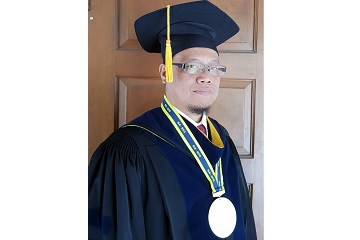Carrageenan, Prospective as Raw Materials for Biofilms

Today, the public is increasingly aware of the limitations of natural resources and environmental issues. This encourages the increased use of natural materials that are renewable, easily biodegradable, and environmentally friendly.
Polymer made from petro-chemicals are now widely replaced by the use of biopolymers that are renewable such as polysaccharides and proteins. The biopolymer can be derived from natural resources, waste food processing industry, as well as agricultural by-products.
One of the natural resources to be used as a biopolymer is carrageenan. Carrageenan is a polysaccharide sulfate which is extracted from several species of red seaweed (Rhodophyceae). Research on biopolymers made from carrageenan and evaluation of its characteristics have been made. However, biofilm research-based carrageenan is still very limited in Indonesia.
Departing from these issues, Professor of the Faculty of Fisheries and Marine Science, IPB University (IPB FPIK), Prof. Dr. Joko Santoso investigated the characteristics of the biofilm-based carrageenan. Prof. Joko with the team trying to study the extraction process to produce carrageenan with appropriate characteristics as a biofilm.
According to Deputy Dean of Academic and Student Affairs FPIK IPB, carrageenan extraction research has been done before with a focus on the quality of carrageenan in general, not as a biofilm. This requires special study on the extraction process to produce carrageenan with corresponding properties as the base material of the biofilm.
In this study, carrageenan extracted using KOH 0.5; 1; and 1.5 percent with the old extraction of one, two and three hours. Carrageenan extracted using KOH 0.5 percent for one hour is able to provide the best traits to be used as the base material for biofilm. Biofilm-based carrageenan at a concentration of 1.5 percent has the best characteristics in tensile strength, percent elongation, and the internal structure of the polymer which is more compact and more solid.
“We certainly hope that the results of this study could be one solution for the community as an alternative to substitute for plastic films. However, it certainly is necessary to study further in improving the characteristics of the resulting biofilms, “said Prof. Joko.
For information, the Center for Testing Implementation of Fisheries (BBP2HP) has been engineered by dodol Garut edible film through the coating process. This process is able to provide high added value, namely a longer shelf life with a sparkling appearance.
“In the future, this topic becomes important and interesting as the people’s awareness of the environment, the problem of waste, and also so that the health of biofilm as active packaging is a solution in this respect,” said Prof. Joko.
In addition, Prof. Joko and the team also did depolymerization on the carrageenan by minimizing the molecular weight so as to facilitate the application associated with increased solubility. “We were with the team headed by Dr. Eng. Uju Chairman, Department of Aquatic Product Technology FPIK IPB extracted pigment from seaweed and then extracted the carrageenan, “said Prof. Joko. (AVR)



